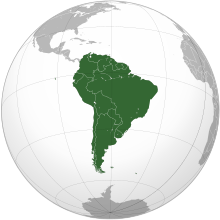User:Junyanliu/sandbox

South-south cooperation means that developing countries in the south of the Southern Hemisphere and the south of the Northern Hemisphere help and promote each other's development. Compared with developed countries, the economic development of developing countries is relatively backward, and the science and technology, medical treatment and other aspects of developing countries are also relatively backward. South-south cooperation allows these countries to help each other, to learn from each other, and also, through the trade situation, through the development of the primary countries.
South-south cooperation has opened up a new path for the better development of developing countries. Through South-South cooperation, one can give full play to one's own advantages and then use the advantages of other countries to promote the development of one's own economy. "South–South cooperation has grown substantially as countries like China, Brazil and India, boosted by economic growth and stability, expand their partnerships abroad in pursuit of new opportunities and influence."[1] South-south cooperation promotes the exchange of knowledge and experience among various countries, and promotes the development of national construction, enterprise development and education level improvement in accordance with the goal of sustainable development. For example, cooperation between China and African countries, cooperation between India and China and so on are examples of South-South cooperation.
Date of commencement of cooperation:
South-south cooperation began in 2003, when the United Nations, through several meetings, decided to define 19 December as South-South cooperation. Since 2004, 19 December has been the anniversary of South-South cooperation. The aspects of promoting development include: science and technology, resources, human resources and so on. The theme of south-south Cooperation Day, the first of its kind, in 2004, was: Achieving the Millennium Development Goals through South-South Cooperation.
Since 2012, the United Nations has changed the date of observance of South-South Cooperation from 19 December to 12 September. By creating the South-South Cooperation Day, the United Nations can better remind these developing countries how to use the cooperation platform set up by the United Nations to promote their own development.

History and Development:
The formation of South-South cooperation comes from the different levels of economic development between the North and the South. There is no north-north cooperation, but only South-South cooperation because the northern countries are basically developed countries and can develop well without the help of other countries. The emergence of South-South cooperation was facilitated by these developing countries of the South with the same objectives and with the same mandate.
South-south cooperation began in 1955 and many developing countries have expressed a desire to cooperate. At Bandung conference in 1955, many developing countries expressed their intention to cooperate in order to promote the import and export of their own production materials.
By the 1960s, developing countries had formed the Non-Aligned Movement and the Group of 77, both of which laid the foundation for South-South cooperation. In the early 1960s, developing countries slowly began to trade more.
By the end of the 20th century, developing countries had formed many economic communities, or economic development associations, such as the Economic Community of West African States and the Southern African Development Association. These economic communities were formed for the cooperation and trade of the primary developing countries.
Since the beginning of the 21st century, there has been more and more cooperation among developing countries, and with the promotion of South-South cooperation, many developing countries have achieved rapid development. Even within the BRICS grouping there are considerable inequalities, with Brazil, India and South Africa all running sizeable trade deficits with China. [2] In 2015, more and more countries joined the ranks of South-South cooperation, which has continued to play its role.
Form of cooperation:
Technology and technology
Countries could sell patents to each other, or train each other, or export the technology. Countries with better technology help those with less. For example, If China can build railways more efficiently or technologically than many Southeast Asian countries, then China will help many Southeast Asian countries build railways.
Knowledge
Knowledge comes from education, and countries can also better promote the cultivation of talents through educational cooperation. It can promote academic exchanges between different countries to better promote the development of each country.
Economic
Regional economic cooperation. Members of South-South cooperation can conduct self-testing of the flow of goods among themselves to reduce tariffs and the impact of local markets.
Cooperative trade. Countries could sign trade agreements to export and import goods to each other to increase their income and boost their economies.
 | This is a user sandbox of Junyanliu. You can use it for testing or practicing edits. This is not the sandbox where you should draft your assigned article for a dashboard.wikiedu.org course. To find the right sandbox for your assignment, visit your Dashboard course page and follow the Sandbox Draft link for your assigned article in the My Articles section. |
- ^ Abdenur, Adriana Erthal; Fonseca, João Moura Estevão Marques Da (2013-09-01). "The North's Growing Role in South–South Cooperation: keeping the foothold". Third World Quarterly. 34 (8): 1475–1491. doi:10.1080/01436597.2013.831579. ISSN 0143-6597.
- ^ Gray, Kevin; Gills, Barry K. (2016-04-02). "South–South cooperation and the rise of the Global South". Third World Quarterly. 37 (4): 557–574. doi:10.1080/01436597.2015.1128817. ISSN 0143-6597.
